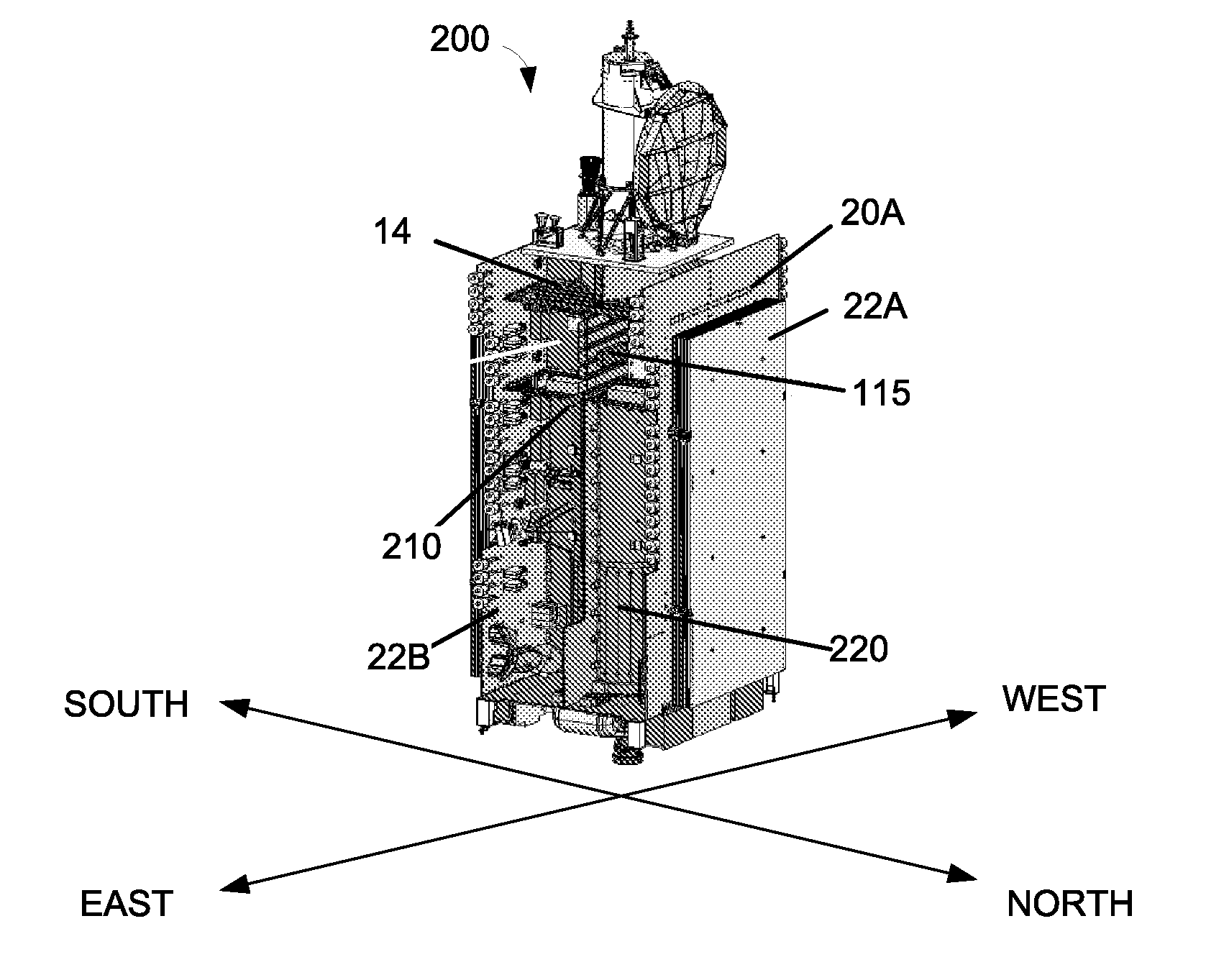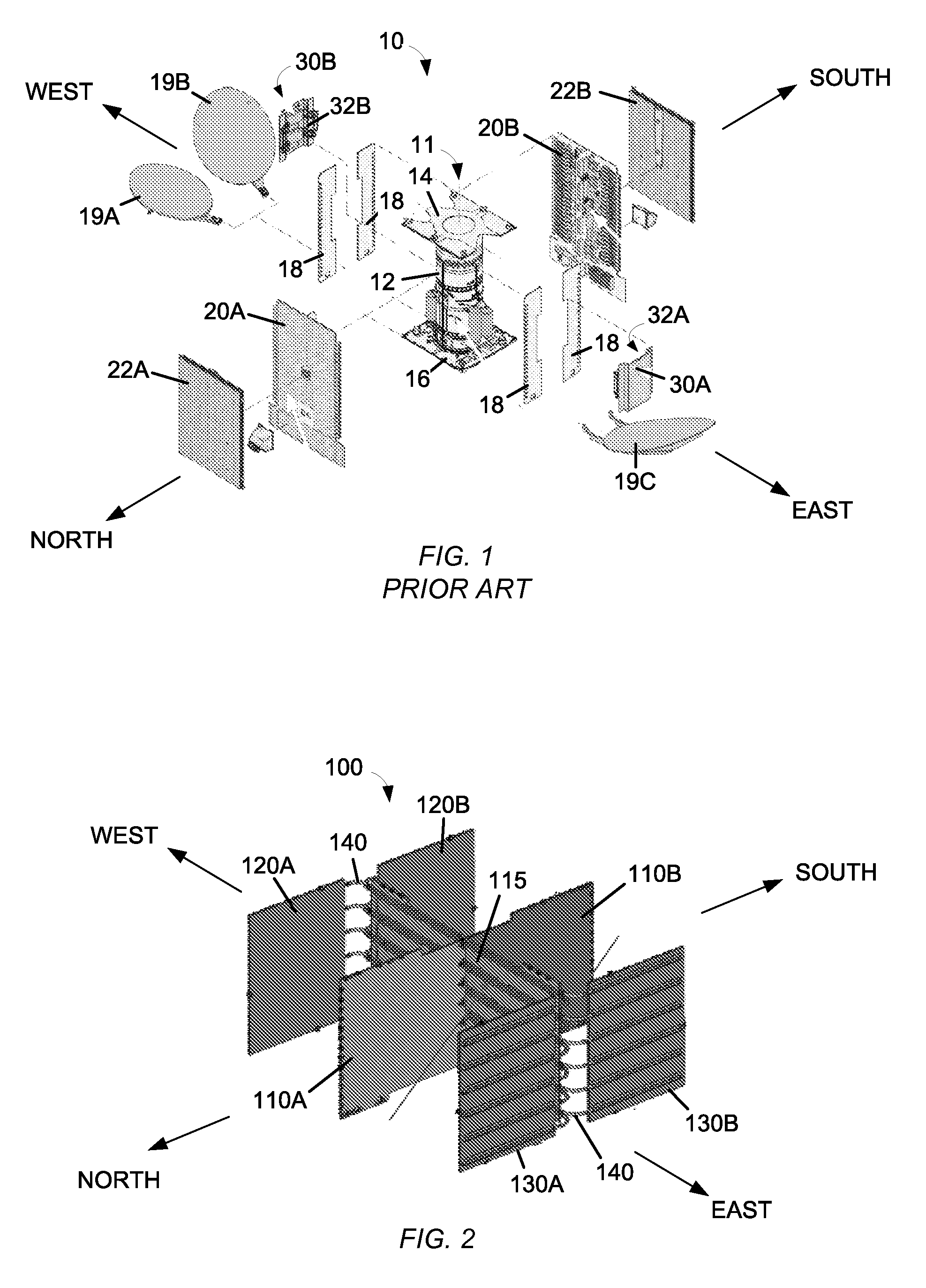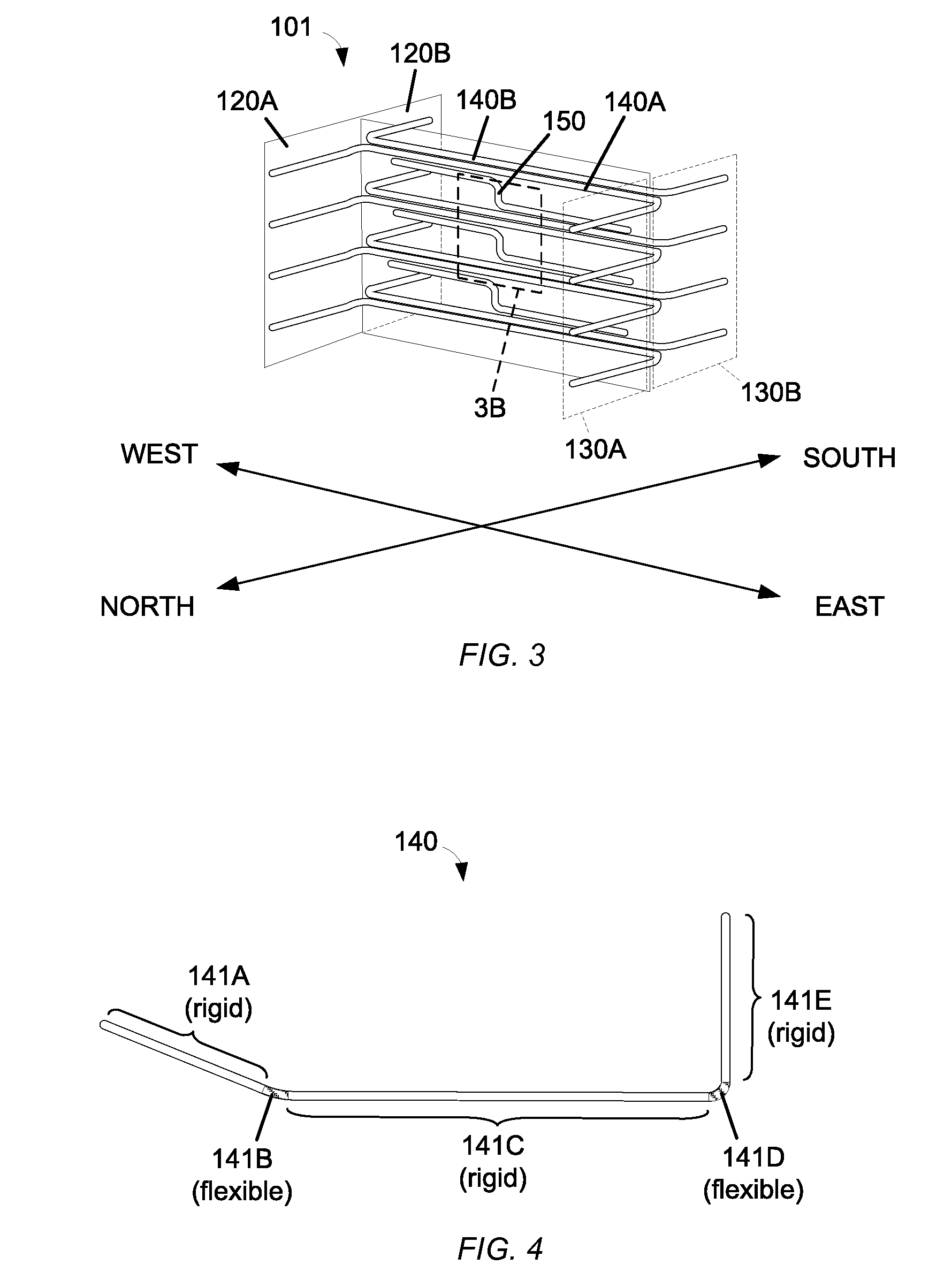Spacecraft east-west radiator assembly
a radiator and east-west technology, applied in the field of heat transfer systems, can solve the problems of high thermal dissipation requirements, less effective, and additional heat rejection capability beyond, and achieve the effect of reducing the average temperature and temperature fluctuations, and facilitating access to internal equipmen
- Summary
- Abstract
- Description
- Claims
- Application Information
AI Technical Summary
Benefits of technology
Problems solved by technology
Method used
Image
Examples
Embodiment Construction
[0023]The present invention generally relates to heat-transfer systems and, in particular, to a spacecraft radiator assembly with flexible heat pipes.
[0024]The following description discloses embodiments of an east-west heat-transfer assembly that is particularly adapted for use on a GEO spacecraft. In certain embodiments, however, the same concepts and construction may be effectively used on other types of spacecraft as well as other applications where radiator panels provide a source of cooling.
[0025]The detailed description set forth below is intended as a description of various configurations of the subject technology and is not intended to represent the only configurations in which the subject technology may be practiced. The appended drawings are incorporated herein and constitute a part of the detailed description. The detailed description includes specific details for the purpose of providing a thorough understanding of the subject technology. However, it will be apparent to...
PUM
 Login to View More
Login to View More Abstract
Description
Claims
Application Information
 Login to View More
Login to View More - R&D
- Intellectual Property
- Life Sciences
- Materials
- Tech Scout
- Unparalleled Data Quality
- Higher Quality Content
- 60% Fewer Hallucinations
Browse by: Latest US Patents, China's latest patents, Technical Efficacy Thesaurus, Application Domain, Technology Topic, Popular Technical Reports.
© 2025 PatSnap. All rights reserved.Legal|Privacy policy|Modern Slavery Act Transparency Statement|Sitemap|About US| Contact US: help@patsnap.com



